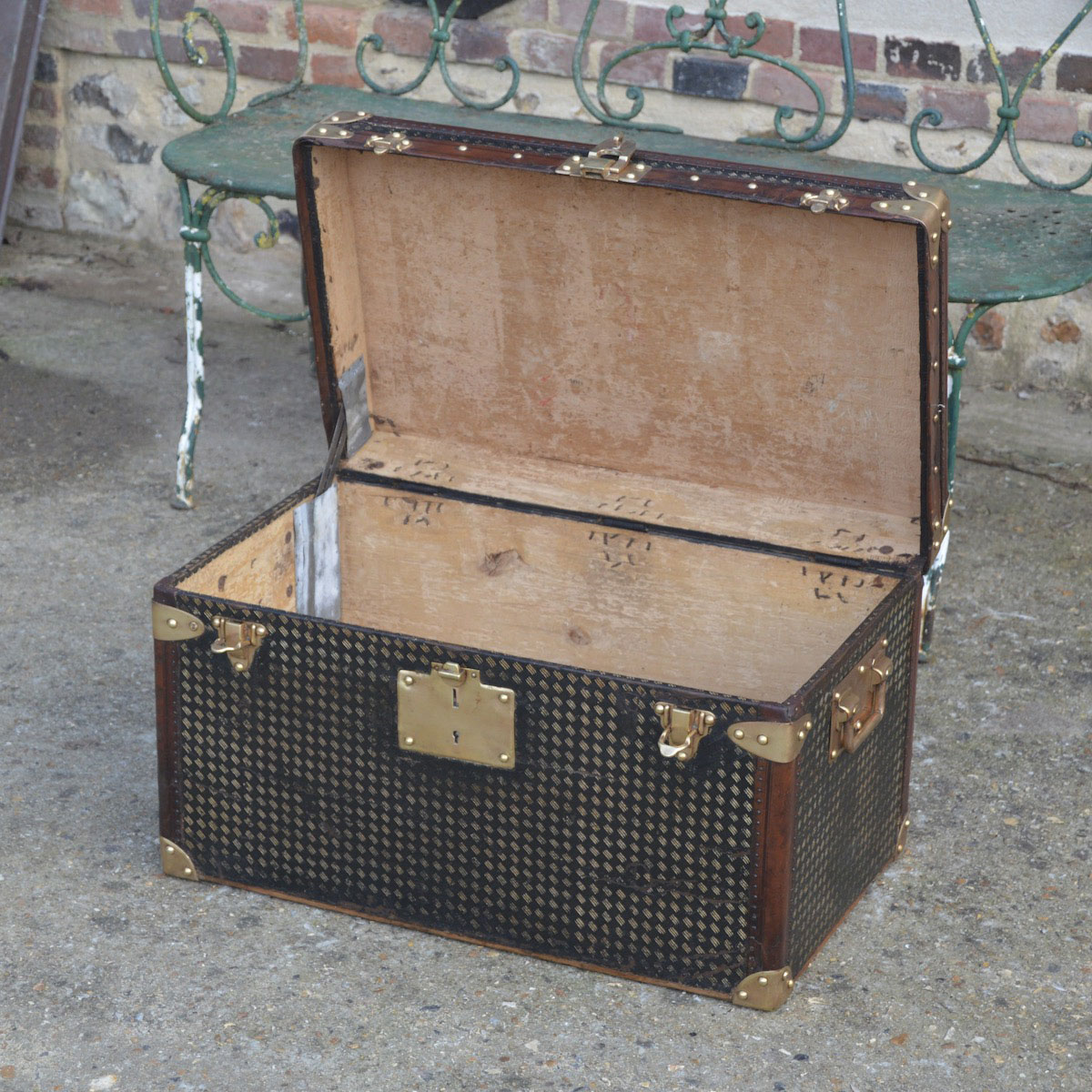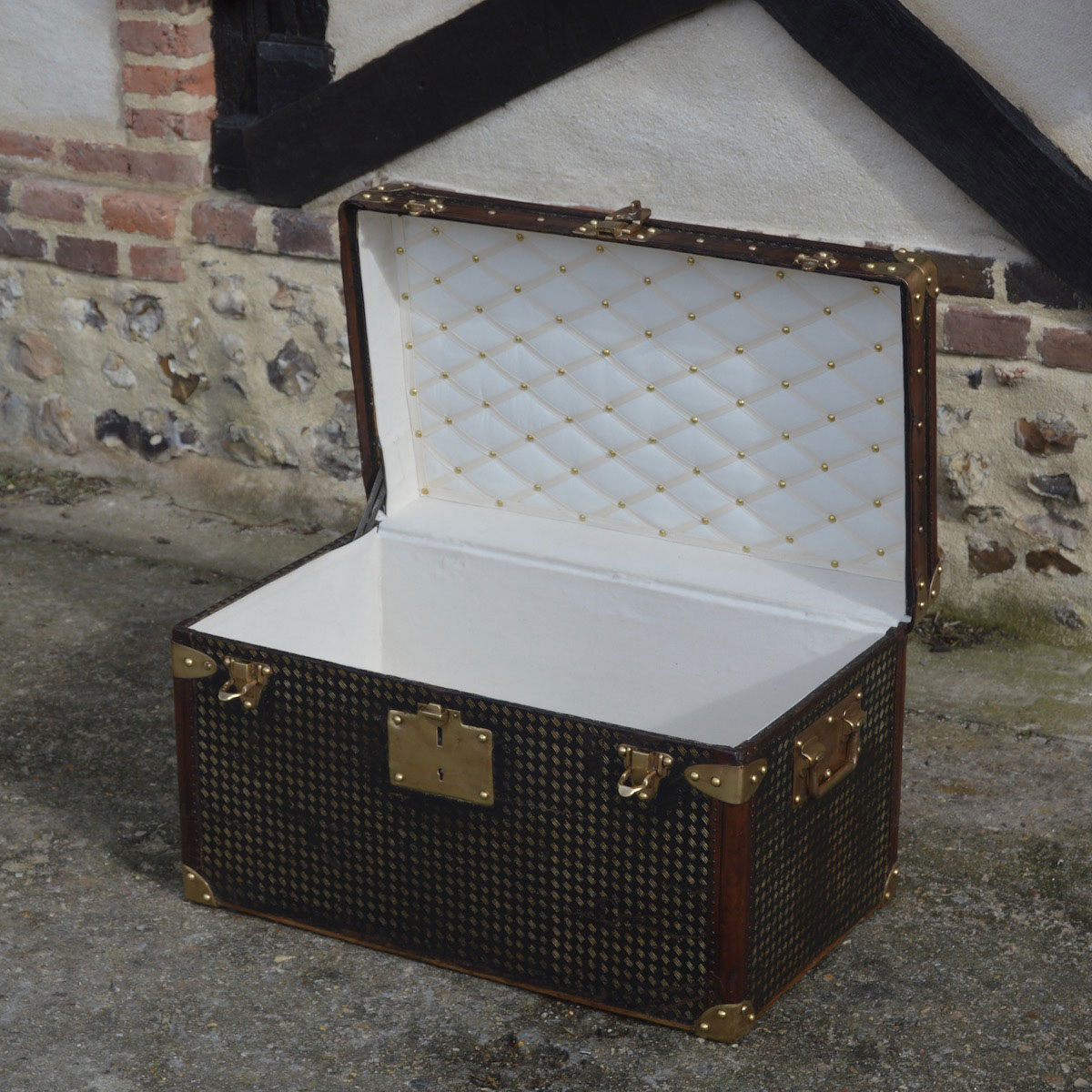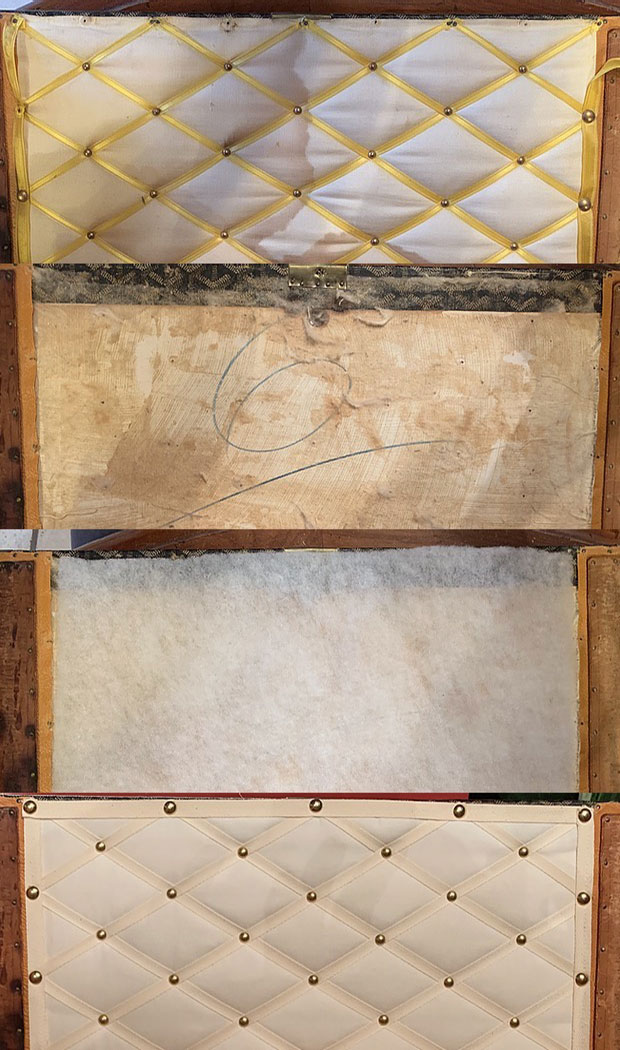We use cookies to make your experience better. To comply with the new e-Privacy directive, we need to ask for your consent to set the cookies. Learn more.
Internal coating
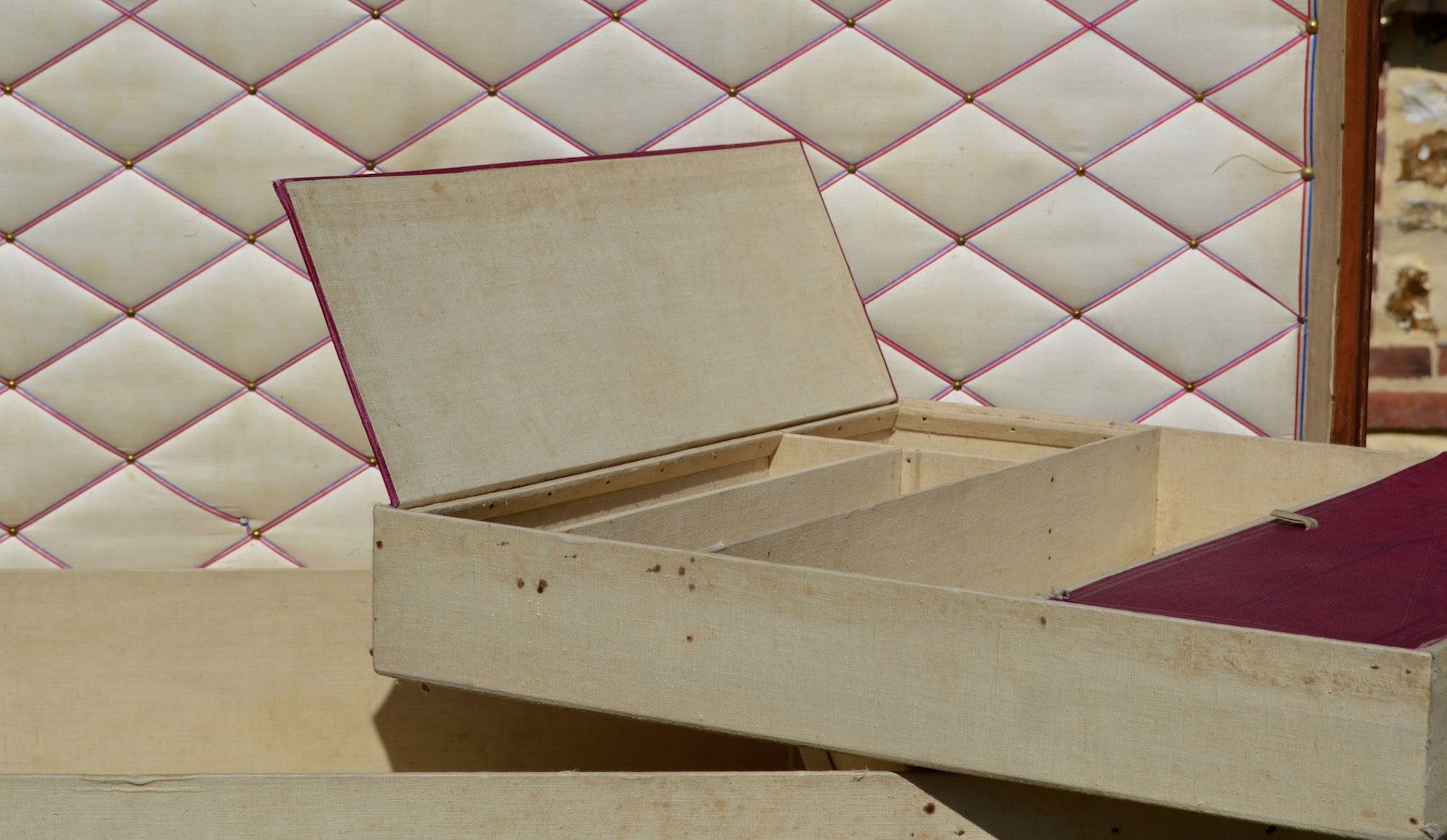
The restoration of the interior lining of a trunk :
The interior of a trunk always consists of two parts: the cover and the trough. The bonnet is the upper part of the trunk. It is often padded or equipped with tape to hold family photos and/or protect the contents of the luggage when closed. The trunk, the lower part of the trunk, must hold the contents to be transported. It is usually fitted with a series of removable frames to create storage levels. The higher the model, the more frames there are inside.
When restoring the interior of a trunk, we try as much as possible to use fabrics similar to the original coverings. As some patterned fabrics no longer exist, we are constantly looking for specific fabrics from our suppliers for the interior lining of our trunks. Some adjustments can be made according to the customer's use, always trying to keep the original design of the luggage.
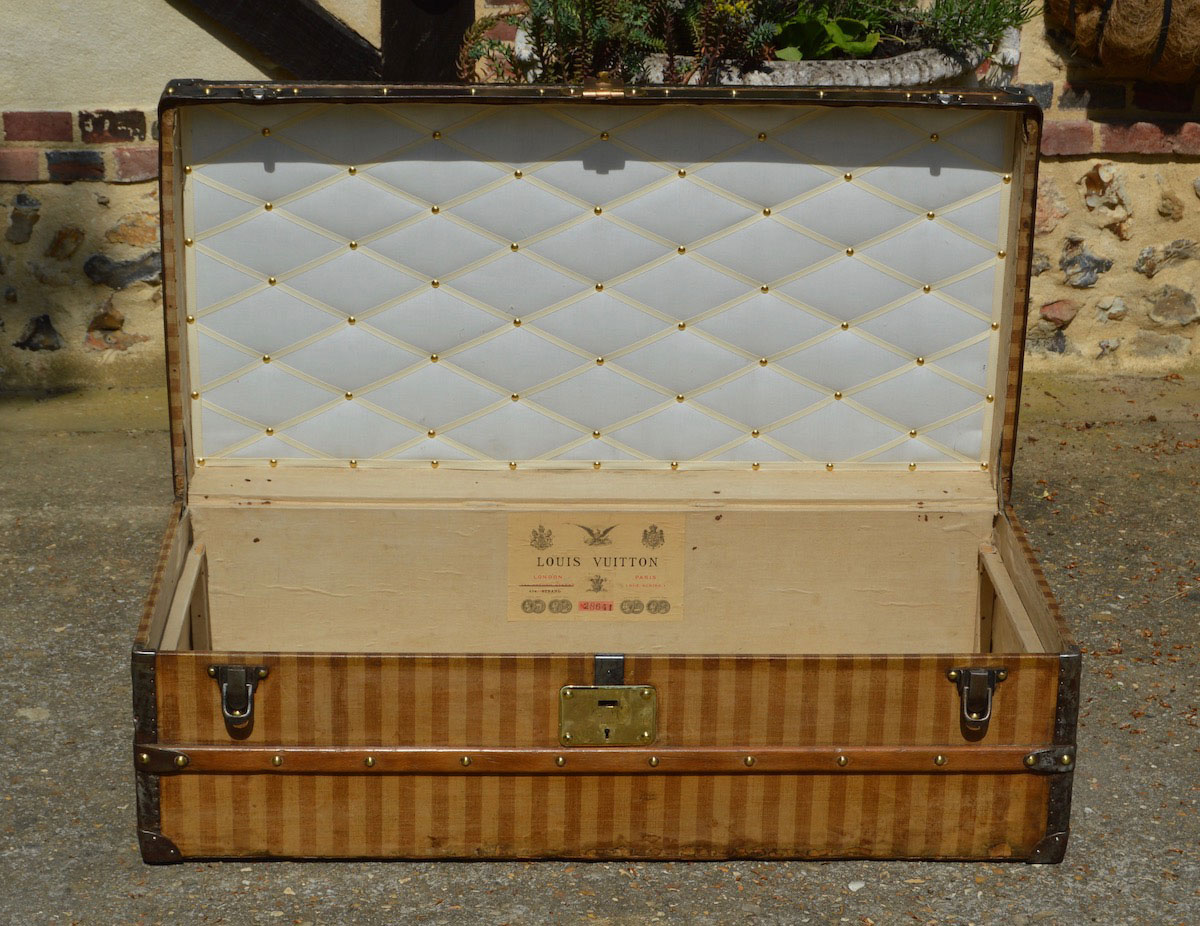
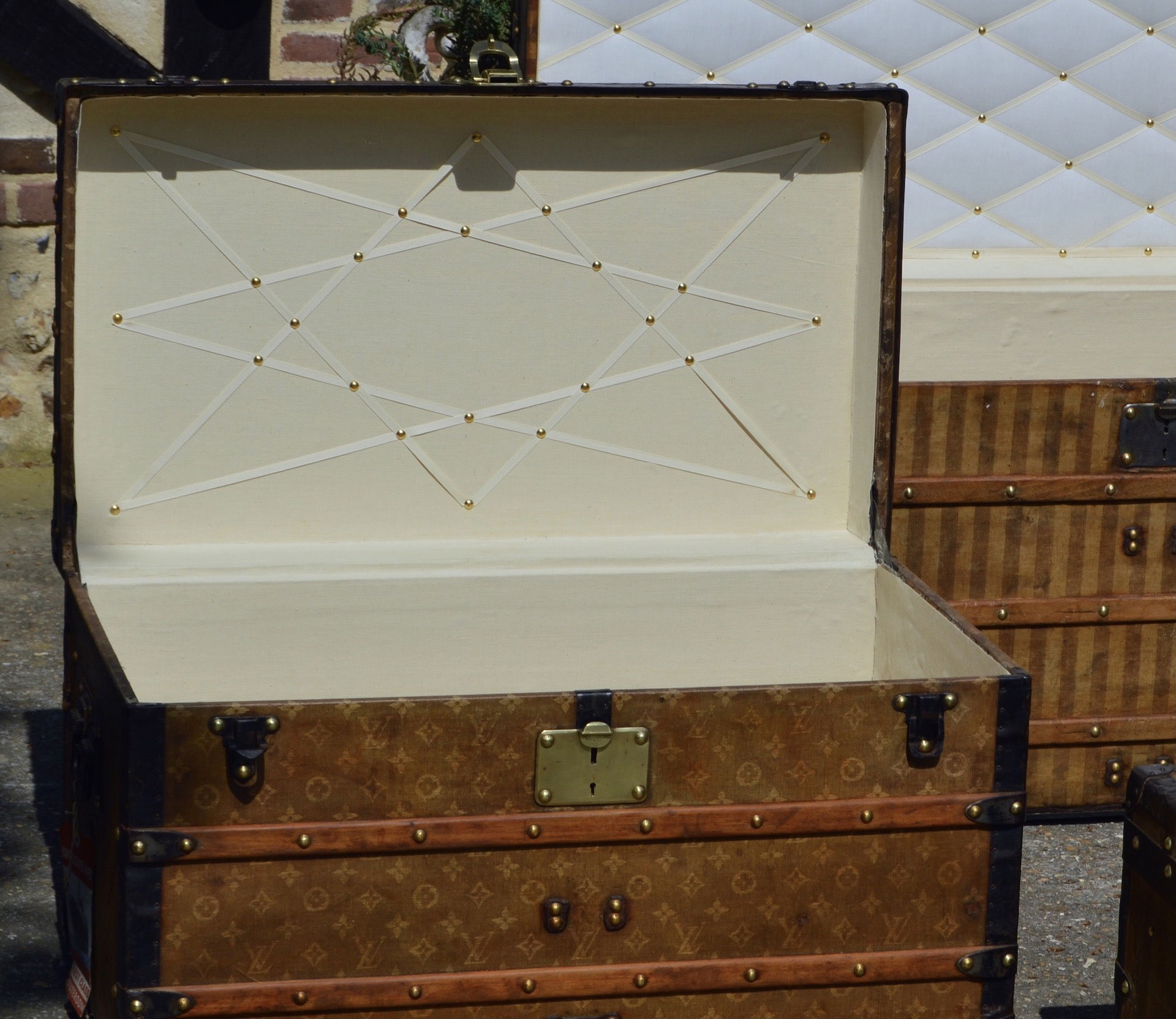
Restoration of the capiton
These pads consisted of a cotton strip attached to the bonnet, then covered with a satin cloth, stretched and studded at each end. Ribbons of cotton were attached to this cloth and laid parallel to create a grid pattern. The intersections were then fixed with upholsterer's nails to create a quilted pattern and reveal the upholstery. Thicker tape was used to cover the edges and junctions.
It is not uncommon today to find pins or needles, fixed by the original owner to hold fabrics in her trunk, during the dismantling and restoration of these upholstery pieces.
The inner lining of the trunk
The interior of a trunk is usually covered with beige linen or patterned paper. Before the canvas was applied, a very thin cloth had to be glued over the entire trunk to receive the final coating. This cloth was used to prepare a good support for the wood and to absorb the moisture of the glue used.
Once the support is prepared, the canvas is measured, cut and glued into the trunk. A series of nails can be added at the edges to permanently fix the new covering.
